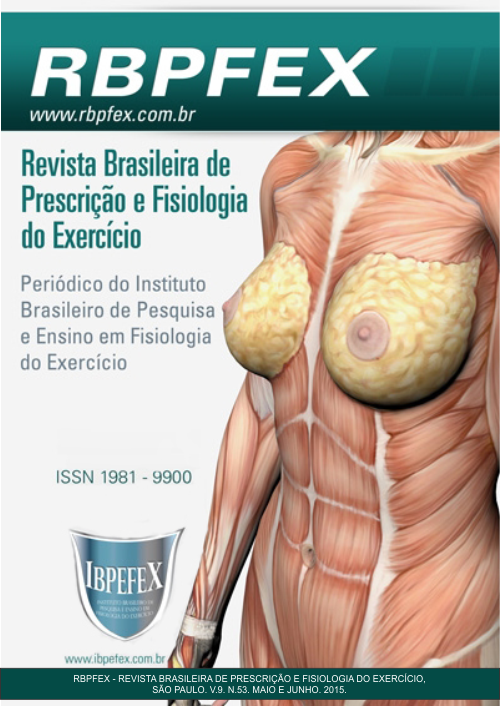Anthropometric and nutritional status of the elderly resistance exercise laboratory and health
Abstract
Aging is a complex process involvingmany variables (genetic, environmental, lifestyle, diseases, etc.) that interact with each other and significantly influences the way that it should reach a certain age. The relationship between quality of life, exercise, health and aging has been increasingly discussed and analyzed scientifically. The aim of the study was to evaluate the dietary and anthropometric profile of the elderly participants in Project Resistance Exercise and Quality of Life you read / UEPA. Total of 22 seniors enrolled in the program, aged more than sixty years, of both sexes. Anthropometric assessment was performed which consisted of weight, height, skinfolds and body circumferences for subsequent estimation of percentage body fat, cardiovascular risk factors and estimated loss of muscle mass. For dietary assessment was made of the questionnaire and the interview recall 24 hours for analysis of dietary profile of the participants. The BMI percentages of normal weight (45.5%) and overweight (45.5%), the calf circumference 95.5% of the elderly were eutrophic. With respect to dietary assessment, the values of vitamin A (63.6%) and fiber (77.3%) had a low consumption, while consumption of protein (68.2%) above normal. Carbohydrate (72.7%), Lipids (81.8%), vitamin C (86.4%), iron (90.9%) and fat (100%) are within the normal range. Despite the numerous benefits that exercise provides to the elderly, the decision to adopt a healthy lifestyle with regular practice of physical exercise and healthy eating depends on the social, physical andemotional.
Authors who publish in this journal agree to the following terms:
- Authors retain the copyright and grant the journal the right of first publication, with work simultaneously licensed under the Creative Commons Attribution License BY-NC which allows the sharing of the work with acknowledgment of the authorship of the work and initial publication in this journal.
- Authors are authorized to enter into additional contracts separately for non-exclusive distribution of the version of the work published in this journal (eg, publishing in institutional repository or book chapter), with acknowledgment of authorship and initial publication in this journal.
- Authors are allowed and encouraged to post and distribute their work online (eg, in institutional repositories or on their personal page) at any point before or during the editorial process, as this can bring about productive change as well as increase impact and impact. citation of published work (See The Effect of Free Access).






